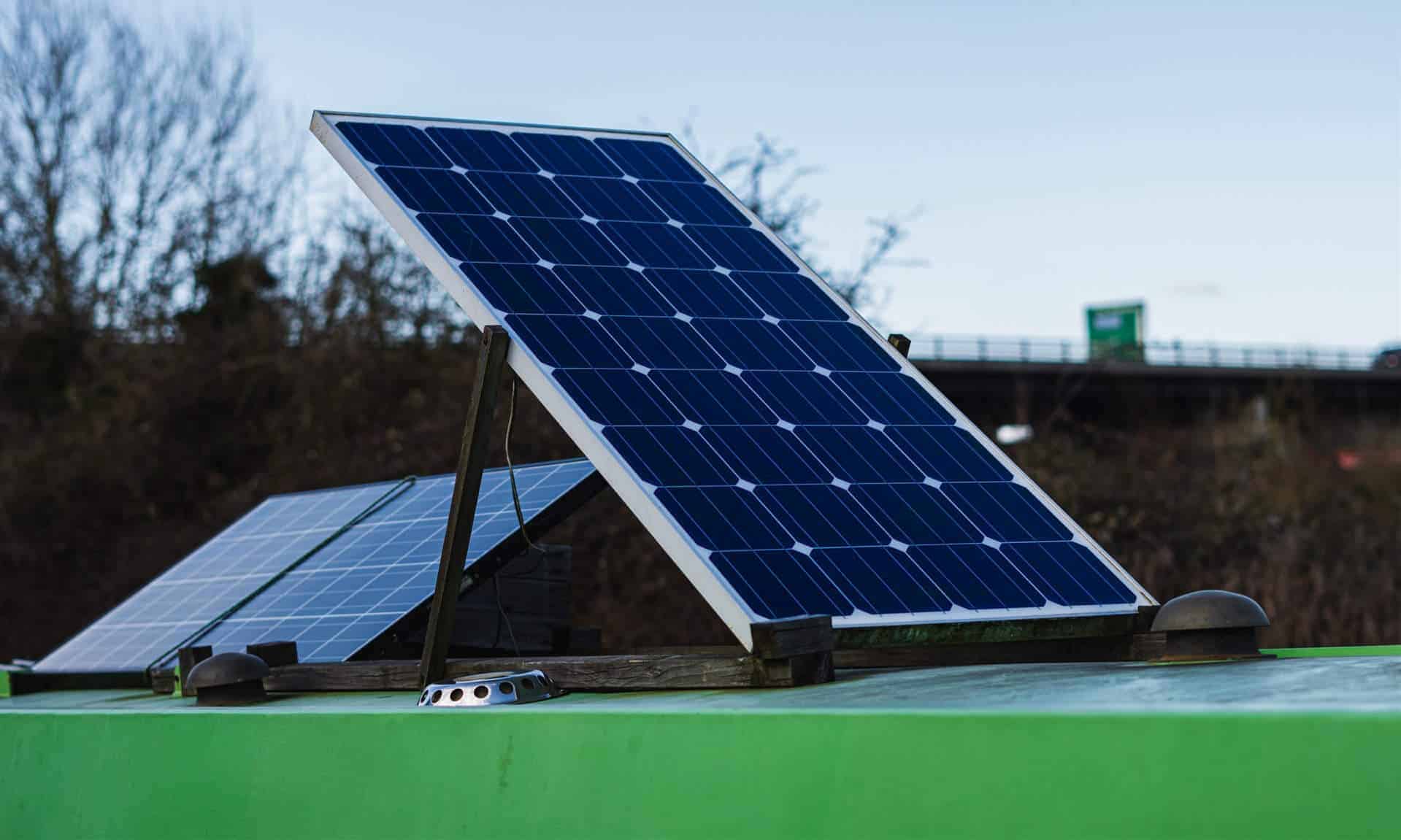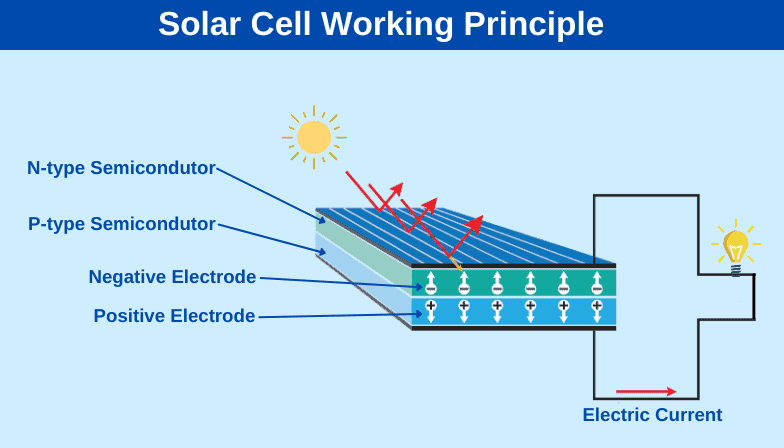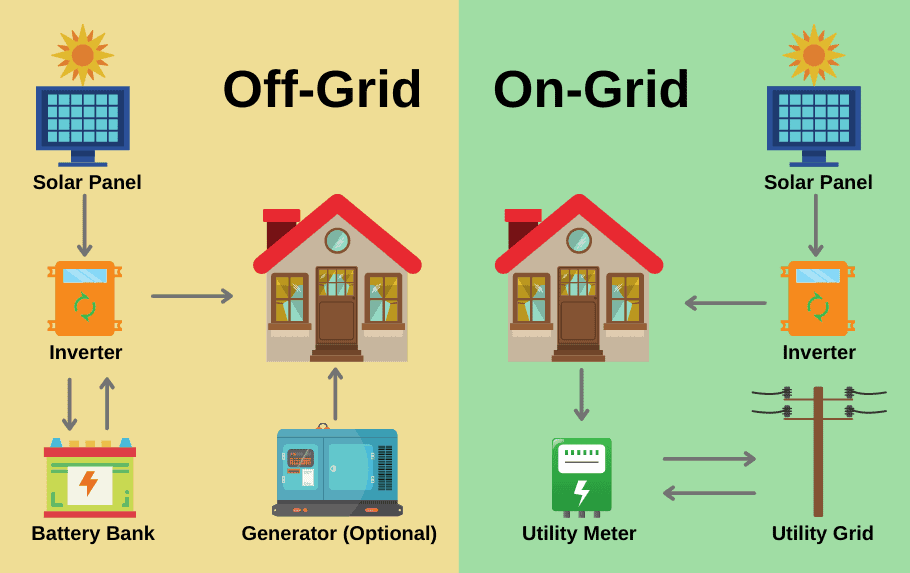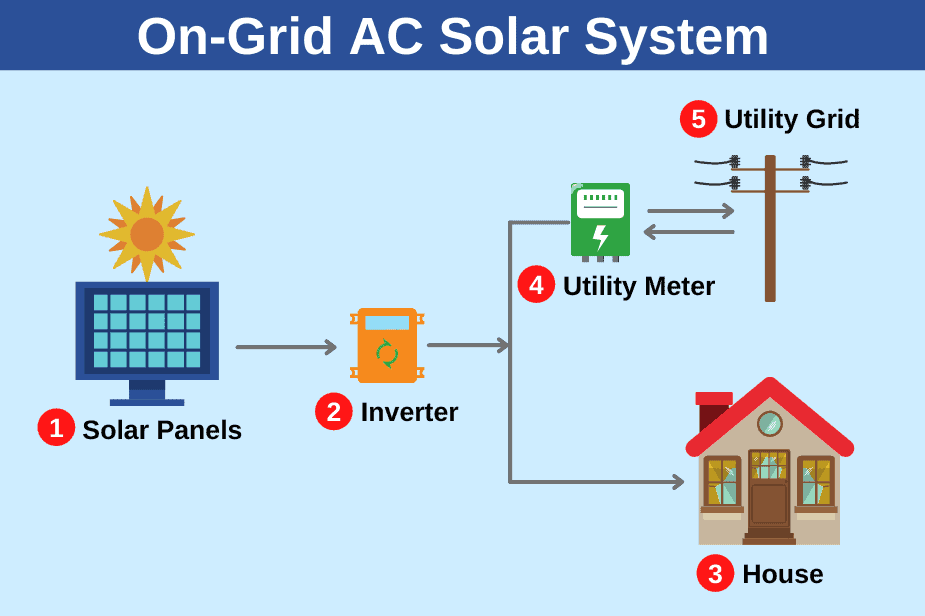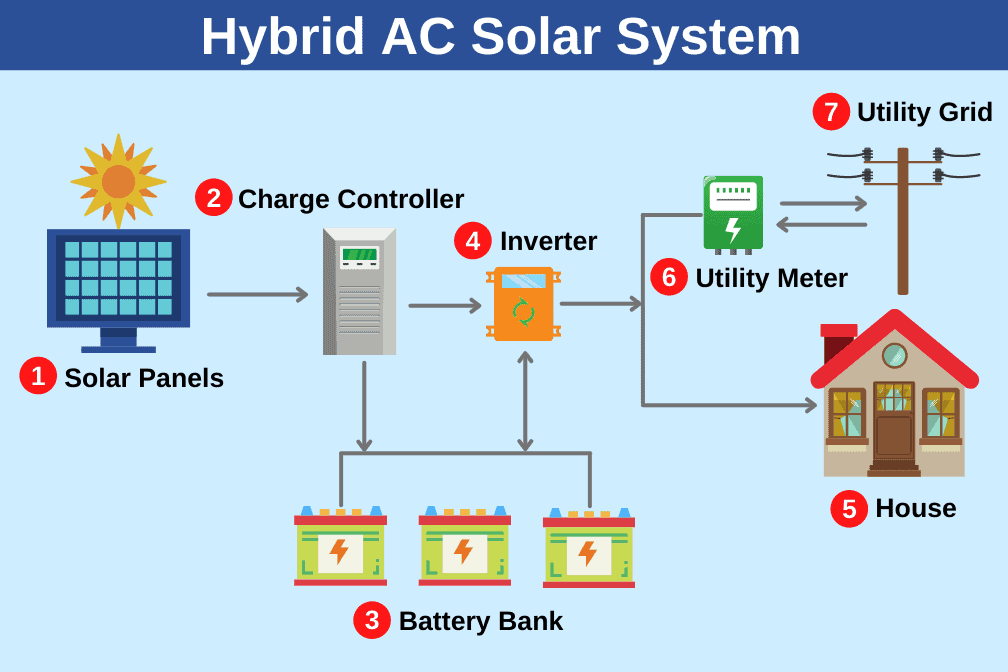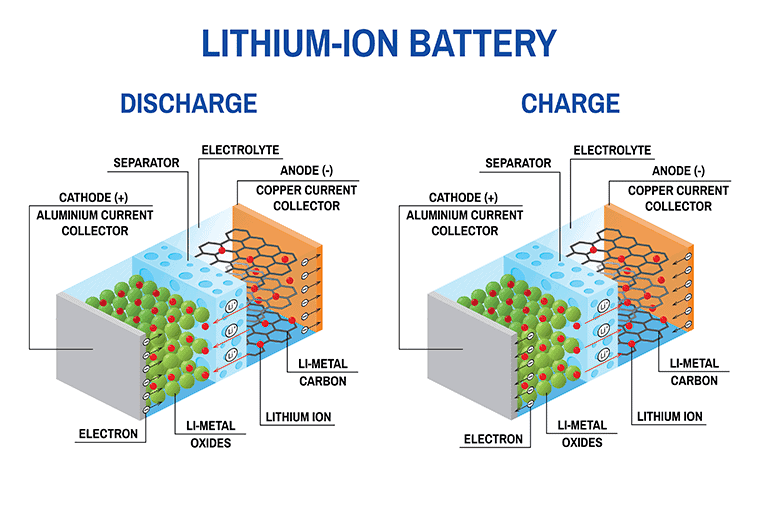We all know that solar panels take energy from the sun and convert it into electricity that we can use in our homes. But have you ever wondered how this energy can be stored for us to use later? The sun doesn’t shine for twenty-four hours a day, so how is it that solar systems can keep electricity until we need it?
When you look into how solar systems work, everything becomes clear, so let me take you through the ways that different solar systems store energy for us to use in our homes and elsewhere.
A quick recap on how solar panels work
solar panels are collections of photovoltaic (PV) cells that react when they come into contact with energy thrown out by the sun. The sun’s energy comes to us in the form of photons. We don’t need to get into the detail here, but each solar cell contains charged silicon discs that produce electrons when they come into contact with photons.
Electrons are tiny subatomic particles that carry an electrical charge, and we harness these to produce Direct Current (DC) electricity.
And that’s all that solar panels do. They can’t hold on to electricity, and we can’t plug an electronic device into them. Solar panels are simply a collection of solar PV cells that create the chemical reaction that takes solar power and converts it to electrical energy.
At this stage, we can answer our initial question of how do solar panels store energy.
Let’s take a look at how that works.
What happens to all the electricity we generate?
Solar panels are just the start, but since we need somewhere to store our electricity, clearly other components go into making a complete solar system.
The next stage of the electricity generation process is to convert the electricity from Direct Current (DC) to Alternating Current (AC). We do this because Alternating Current is the type of electricity that we use in our homes.
All of the electricity generated by our solar panels is cabled through to an inverter where this conversion from DC to AC takes place. But an inverter still doesn’t store any electricity, this happens in the next stage, and the way it works depends on what kind of solar system we are using.
The two main kinds of home solar system
There are two main kinds of home solar systems, and each one stores electricity differently.
Off-grid solar systems
an off-grid home solar system is a stand-alone system. If you install off-grid solar, you don’t connect to your local utility’s electrical supply at all. All of the power for your home will come from your solar panels.
The advantage of an off-grid system is that you don’t have any electricity bills, and you can generate power even in places that are far away from the electrical grid network.
However, the disadvantage of off-grid systems is that you have to generate enough power from your solar system to give you all the energy your home needs. Off-grid solar systems don’t have a fallback option, so if your solar energy reserve runs out, then your house goes dark.
This video uses a miniaturized working solar system to take you through the parts of a home solar system in more depth.
On-grid solar systems
On-grid solar systems are the kind that you see most commonly in American homes today.
An on-grid solar system connects to the local electrical grid in the same way as a home without solar power. The difference is that with an on-grid home solar system, the flow of electricity can go back into the grid as well as out from it. Your home becomes an electricity producer as well as a user.
Power storage in off-grid solar systems
So if an off-grid solar system doesn’t connect to anything else, where does it store the electricity that your solar panels generate? The answer, as you’ve probably guessed, is in batteries.
For example, you can make a simple off-grid solar system by connecting some solar panels to a car battery, but that won’t store enough energy to power a home. If you want an off-grid solar system to be your only electricity source, you will need much larger batteries.
Fortunately, there are battery units that are large and powerful enough to store electricity for an off-grid solar system. This video shows you how all the different components of an off-grid solar system fit together and operate.
Power storage and exchange in on-grid solar systems
With an on-grid solar system, you don’t necessarily need to store electricity in your home. After the inverter stage of the process, where electricity is converted from DC to AC, your solar system simply connects to your local electrical grid. Then you just use your mains electricity as usual.
Some of the time, you’ll be using more energy at home than your solar panels can generate, and so electricity will flow into your home from the grid. This is how an on-grid system supplies you with electricity at night when the solar panels aren’t working.
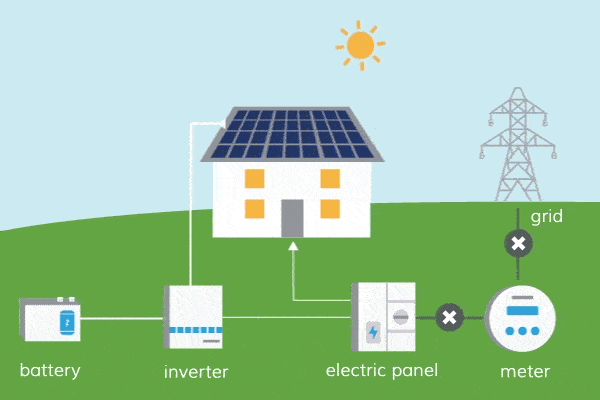
But there will also be times when your solar panels are producing more power than you can use in your home, and this excess electricity, rather than being wasted, is sent back to the grid, effectively offsetting your future electricity use. The beauty of this setup is that your utility pays you for this electricity, often at substantially higher rates.
An on-grid solar system is a great way to reduce your electricity bills by netting off your energy usage against the power that your solar system generates.
The third type of home solar system – hybrid solar system
There’s a third type of home solar system that is perhaps the best of all since it can store solar energy both inside and away from your home. A hybrid solar system is a combination of an on and off-grid system.
A hybrid solar system adds battery storage to an on-grid system.
Perhaps the main advantage of a hybrid solar system over an on-grid system is that if there is a power outage, the system continues to power your home. When grid power goes down, the system simply sources its electricity from the store saved in the batteries.
A hybrid system also has advantages over an off-grid system. During daylight sunshine hours, when your solar system generates more power than you can use, an off-grid system fills up the battery storage. But when these batteries are full, any additional electricity that your solar panels produce just gets wasted.
With a hybrid system, any surplus electricity you generate can be sold back to the grid. This gives you further savings on your electricity costs by offsetting the extra electricity you give back to the system against the amount that you use.
What type of batteries do solar systems use
lithium-ion batteries are the most common type of electricity storage in home solar systems.
The reason that we use lithium in batteries is that it is a semiconductor. That means that sometimes electricity can pass easily through lithium, and sometimes it’s more difficult. We can control this varying electrical conductivity of lithium to allow batteries to store and then release electrical energy through chemical reactions.
We’ve already mentioned that electrons are the particles that carry an electrical charge. When you connect an electrical device to a lithium-ion battery, what happens (very simply) is that the battery releases a flow of electrons from a positively charged collector through your electronic device to a negatively charged collector back in the battery. This creates a flow of electricity and depletes the storage of energy in the battery.
When the battery is charging, the opposite happens, and charged lithium ions are transferred into a positively charged reserve within the battery storing electrical energy for future use. This is a very high-level summary.
Battery technology is moving quickly, battery size is coming down, and storage capacity is going up. Here is a good article explaining more about how battery storage works throughout electrical grid systems.
A quick recap
We’ve found out that solar panels don’t store energy, but solar systems do.
We’ve looked at how off-grid solar systems use large lithium-ion batteries to store the energy generated by solar panels.
On-grid systems don’t store any electricity in your home, so they don’t need batteries. They simply connect directly to the electrical grid and sometimes your home will take electricity and sometimes it will sell it back into the grid, saving you money.
Hybrid systems are simply on-grid systems with an added battery that gives you more flexibility and a good power reserve.
Finally, we’ve taken a quick look at the chemical processes that batteries use to convert electrical energy into a store of chemical energy and back again.
If you have any questions or comments about how the solar panel stores energy, please share them with us.

